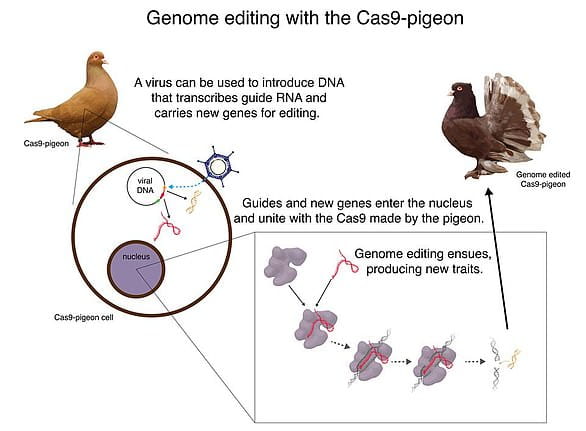- Passenger pigeons numbered up to five billion during the 19th Century
- The species went extinct in 1914 when its last surviving member died in a zoo
- Oddly, the birds’ abundance may have played a role in their extinction
- The pigeons evolved quickly and lost traits useful for surviving in smaller groups
- The birds were unable to adapt to a drop in population size caused by hunting
DailyMail | Oct 9, 2018 | Mark Prigg
Passenger pigeons were once the most abundant bird in North America, with flocks so big they could reach 300 miles (480 km) long and blot out the sun.
Despite numbering up to five billion during the 19th Century, their numbers dropped sharply in the 1800s due to a surge in hunting, and the species finally went extinct in 1914 when its last surviving member, a female called Martha, died alone in Cincinnati Zoo.
Now, thanks to a radical new gene editing technique, they could make a return.
Ben Novak, a US scientists has spent six years on the de-extinction project, is pursuing his Ph.D. at Monash University, where he has bred the birds.
‘New technologies will be able to do what traditional methods of conservation couldn’t – save a species even after it has gone extinct,’ he wrote on Twitter.
He recently spoke at the TedXDeExtinction conference and directs the passenger pigeon project for Revive & Restore.
He is currently rearing the first birds injected with the Cas9 gene, building a flock researchers can use.
In August, 11 squabs survived from 46 eggs, and Novak aims to repeat the process until they have 22 pairs of birds for breeding.
They will then begin introducing passenger pigeon traits.
After he determines how passenger pigeon DNA manifests in the rock pigeons, Novak hopes to edit the band-tailed pigeon, the passenger pigeon’s closest living relative, with as many of the extinct bird’s defining traits as possible.
Eventually, he told the Wall Street Journal, he’ll have a ‘hybrid creature that looks and acts like a passenger pigeon (albeit with no parental training) but still contains band-tailed pigeon DNA’.
He say he has even chosen a name for the new creature – Patagioenas neoectopistes, or ‘new wandering pigeon of America.’
The first step was to sequence the passenger pigeon genome, a project led by Beth Shapiro, a professor of ecology and evolutionary biology at the University of California, Santa Cruz and the author of the book ‘How to Clone a Mammoth.’
[ Read more. ]
